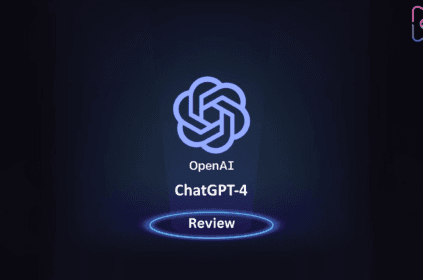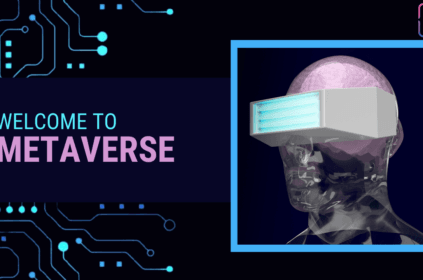“AI is the new electricity.” — Andrew Ng
AI is Everywhere—Here’s What You Need to Know
AI technology is no longer confined to science fiction or tech labs—it’s part of our daily lives. From smartphones to smart home devices, AI is embedded in everything. With tech giants like Apple, Google, and Microsoft integrating AI into their products, staying updated on AI terms is essential.
Now that Apple has introduced Apple Intelligence into iPhones, AI has officially hit the mainstream. ChatGPT, Google Gemini, and Microsoft Copilot are transforming how we interact with technology, enabling conversations with machines that feel more human than ever.
But AI isn’t just about chatbots. The rise of generative AI is reshaping entire industries, with McKinsey Global Institute estimating its potential to add $4.4 trillion annually to the global economy. With AI being incorporated into an ever-expanding list of products—including Google’s Gemini, Microsoft’s Copilot, Anthropic’s Claude, and Perplexity AI—it’s crucial to understand the language of AI.
Below, we break down essential AI terms you need to know to stay informed, whether you’re a casual user, a tech enthusiast, or someone looking to advance in the AI-driven job market.
Key AI Terms You Should Know
Understanding AI Fundamentals
- Artificial Intelligence (AI): The use of technology to simulate human intelligence in computer programs or robotics. AI is an umbrella term that encompasses a range of technologies, from simple automation to complex decision-making systems.
- Machine Learning (ML): A subset of AI that enables computers to learn from data without explicit programming. ML models improve over time by analyzing patterns in data, leading to better predictions and automated decision-making.
- Deep Learning: A method within machine learning that uses neural networks to recognize complex patterns in data. Deep learning has led to advancements in speech recognition, image classification, and even self-driving cars.
- Neural Network: A computational model inspired by the human brain, used to identify patterns and make predictions. These networks consist of layers of nodes, or “neurons,” that process and transform input data.
- Algorithm: A set of instructions that an AI system follows to process data and perform tasks. Algorithms power everything from recommendation engines on streaming services to fraud detection systems in banking.

AI Models and Capabilities
- Artificial General Intelligence (AGI): A hypothetical advanced AI that surpasses human intelligence and can perform a wide range of tasks autonomously. Unlike current AI, which is task-specific, AGI would be capable of reasoning, problem-solving, and adapting to new situations without human intervention.
- Large Language Model (LLM): AI trained on vast text datasets to generate human-like responses. LLMs, such as GPT-4, power chatbots, virtual assistants, and content generation tools.
- Multimodal AI: AI that can process multiple input types, such as text, images, and speech. This allows for more dynamic and flexible applications, such as AI models that can analyze an image while also understanding related text instructions.
- Autonomous Agents: AI models designed to perform specific tasks without constant supervision, such as self-driving cars, robotic process automation (RPA) in businesses, and AI-driven financial trading systems.
Generative AI and Creativity
- Generative AI: AI that creates text, images, videos, or code based on learned patterns from training data. This includes tools like ChatGPT, Midjourney, and Stable Diffusion, which generate new content based on user prompts.
- Diffusion Model: A technique used in image generation where AI adds and removes noise to generate new images. This is a crucial component of AI-powered art generation platforms.
- Text-to-Image Generation: AI’s ability to create images from textual descriptions, as seen in tools like Midjourney and DALL·E. This has revolutionized creative fields, allowing artists and designers to create unique visuals with minimal effort.
- Style Transfer: AI’s ability to adapt one image’s style to another. For example, an AI model can take a modern digital photo and reimagine it in the style of a Van Gogh painting.

AI Ethics and Safety
- AI Ethics: Principles ensuring AI is used responsibly, covering issues like bias, privacy, and fairness. Ethical AI development requires transparency, accountability, and guidelines to prevent harm.
- Bias: Errors in AI caused by training data that may reinforce stereotypes. Biased AI can lead to unfair hiring practices, discriminatory lending decisions, and misleading search results.
- Alignment: Tweaking AI models to produce more ethical, accurate, and user-friendly responses. AI alignment ensures that models behave in ways consistent with human values and intentions.
- Hallucination: When an AI generates incorrect or misleading information with high confidence. AI hallucinations occur when models infer false patterns from their training data, producing unreliable outputs.
- Guardrails: Built-in safety measures to prevent AI from producing harmful content. This includes content moderation in chatbots and filters to prevent the generation of explicit or misleading information.
AI Applications in Everyday Life
- Chatbot: An AI-powered program that interacts with users via text or voice, such as ChatGPT, Google Gemini, and customer support bots.
- Google Gemini: Google’s AI chatbot that integrates with search and generates responses based on real-time data. Unlike ChatGPT, which operates on a fixed dataset, Gemini continuously updates its knowledge base.
- Microsoft Copilot: An AI assistant integrated into Microsoft Office to assist with tasks like writing, summarization, and coding. It helps professionals streamline workflows and improve productivity.
- Perplexity AI: An AI-powered search engine that provides conversational answers with live internet access. Perplexity AI aims to replace traditional search engines with a more interactive, research-driven approach.
- Apple Intelligence: Apple’s AI system designed to integrate seamlessly across iPhones, iPads, and Macs. It enhances user experiences with smart recommendations, text generation, and automated organization.

Advanced AI Concepts
- Prompt: The input given to an AI chatbot to generate a response. Writing effective prompts is crucial for getting high-quality AI-generated content.
- Prompt Chaining: AI’s ability to remember and build upon previous interactions for more contextual responses. This is useful for maintaining coherent conversations and improving user experience.
- Transformers: The AI architecture behind LLMs like ChatGPT, enabling advanced text understanding. Transformers process data in parallel, making them faster and more efficient than older AI models.
- Zero-Shot Learning: AI’s ability to complete a task without prior training on specific examples. This enables AI to generalize knowledge from one domain to another.https://developers.google.com/machine-learning/resources/ml-ai-basics
Why Staying Informed on AI Terms Matters
Understanding AI terms isn’t just about keeping up with trends—it’s about navigating the future. AI is influencing industries from healthcare to finance, marketing to entertainment. Whether you’re looking to impress in a job interview, integrate AI into your business, or simply have informed conversations, knowing these AI terms will give you an edge.
AI is here to stay, and its impact will only grow. Staying informed ensures that you’re not just a passive consumer of technology but an active participant in shaping the future.

















